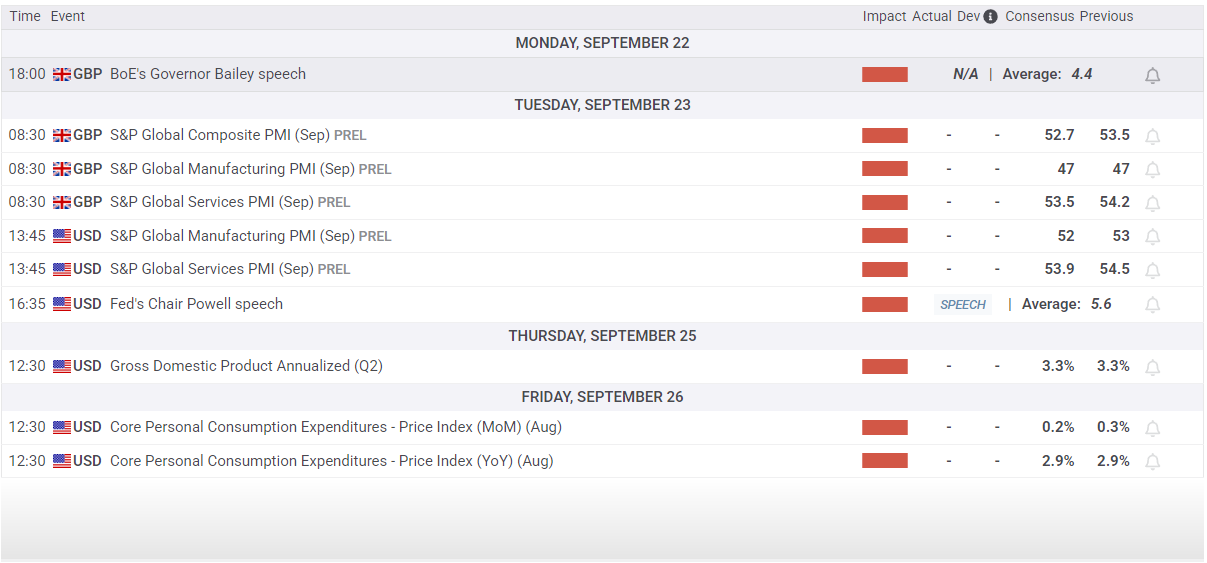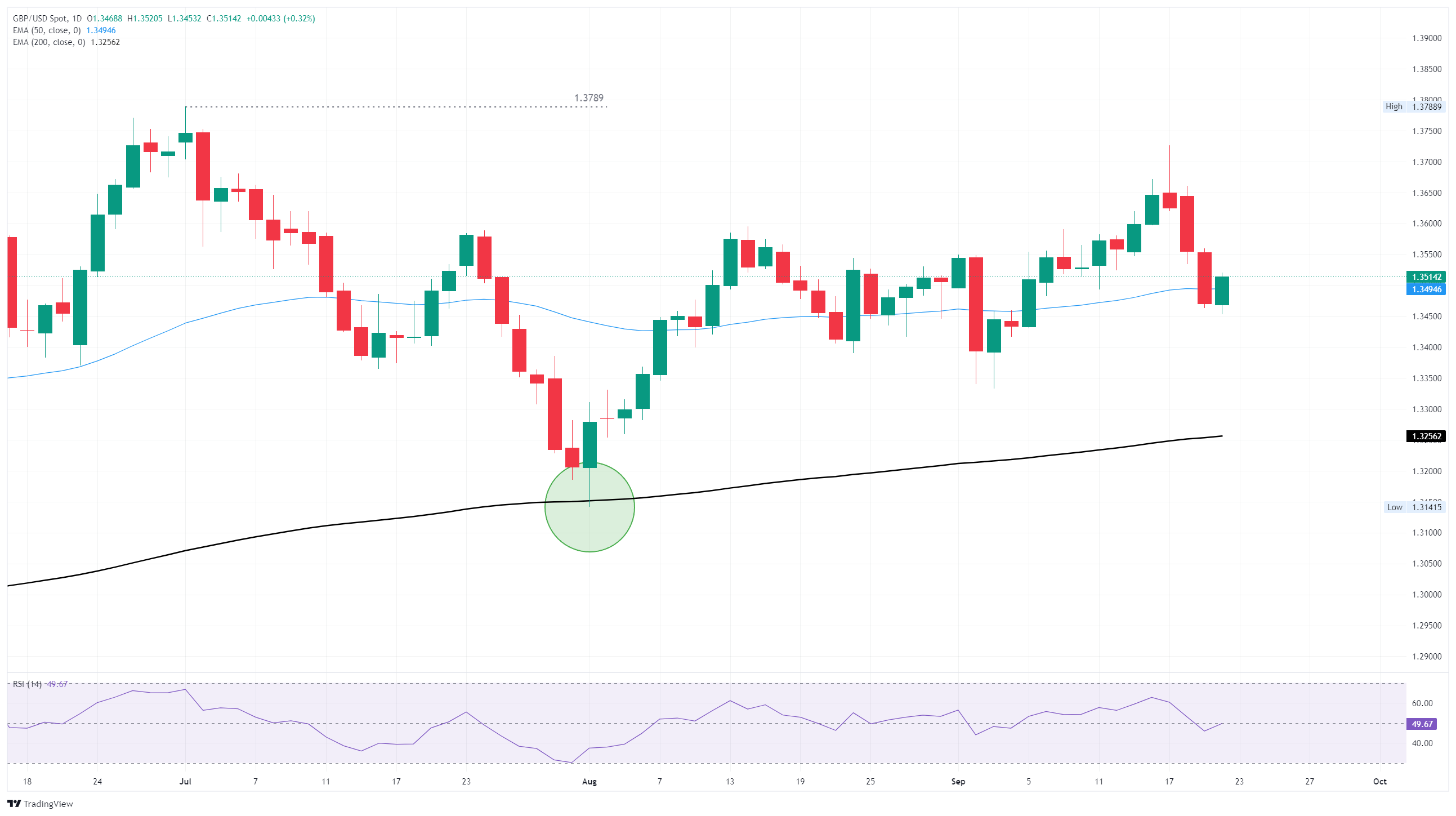GBP/USD clips three-day losing streak, bounces off key technicals
- GBP/USD rose 0.33% on Monday, shaking off a three-day downturn.
- Tuesday will deliver a double-header of PMI survey results.
- Key US inflation data looms large now that the Fed has pivoted into rate cuts.
GBP/USD rebounded on Monday, snapping a three-day losing streak and chalking in a technical bounce from the 50-day Exponential Moving Average (EMA) as broad-market Greenback flows recede. Cable traders will face a double-header of Purchasing Managers Index (PMI) survey results on Tuesday, and business expectations are expected to take a slight hit on both sides of the Atlantic.
The UK’s Manufacturing PMI for September is forecast to hold steady at 47.0, but the Services PMI component is expected to backslide to 53.5 from 54.2. On the American side of the data docket, September’s PMI results are expected to retreat across the board, with the Manufacturing component set to decline sharply to 52.0 from 53.0. The US Services PMI survey is expected to show business sentiment contracted to 53.9 from 54.5.

Fed narrative fracture could drive further market volatility
The Fed finally delivered a long-awaited interest rate cut last week, and proponents for lower rates are already clamoring for more, waving off fresh inflationary risks. The newest member of the Federal Reserve’s (Fed) Board of Governors and Donald Trump’s hand-picked replacement for Adriana Kugler’s recently-vacated seat, Stephen Miran, raced to proclaim his opinion that Fed rates could easily be two full percentage points lower than they are now, a deeply untraditional monetary policy view that is not shared by anyone else on the Fed board, nor in any meaningful datasets.
GBP/USD price forecast
A fresh bullish turnaround for the GBP/USD pair puts Cable on pace to extend a technical bounce from the 50-day EMA near 1.3500, but the 1.3600 handle remains a significant technical hurdle for near-term price action.
GBP/USD daily chart

Pound Sterling FAQs
The Pound Sterling (GBP) is the oldest currency in the world (886 AD) and the official currency of the United Kingdom. It is the fourth most traded unit for foreign exchange (FX) in the world, accounting for 12% of all transactions, averaging $630 billion a day, according to 2022 data. Its key trading pairs are GBP/USD, also known as ‘Cable’, which accounts for 11% of FX, GBP/JPY, or the ‘Dragon’ as it is known by traders (3%), and EUR/GBP (2%). The Pound Sterling is issued by the Bank of England (BoE).
The single most important factor influencing the value of the Pound Sterling is monetary policy decided by the Bank of England. The BoE bases its decisions on whether it has achieved its primary goal of “price stability” – a steady inflation rate of around 2%. Its primary tool for achieving this is the adjustment of interest rates. When inflation is too high, the BoE will try to rein it in by raising interest rates, making it more expensive for people and businesses to access credit. This is generally positive for GBP, as higher interest rates make the UK a more attractive place for global investors to park their money. When inflation falls too low it is a sign economic growth is slowing. In this scenario, the BoE will consider lowering interest rates to cheapen credit so businesses will borrow more to invest in growth-generating projects.
Data releases gauge the health of the economy and can impact the value of the Pound Sterling. Indicators such as GDP, Manufacturing and Services PMIs, and employment can all influence the direction of the GBP. A strong economy is good for Sterling. Not only does it attract more foreign investment but it may encourage the BoE to put up interest rates, which will directly strengthen GBP. Otherwise, if economic data is weak, the Pound Sterling is likely to fall.
Another significant data release for the Pound Sterling is the Trade Balance. This indicator measures the difference between what a country earns from its exports and what it spends on imports over a given period. If a country produces highly sought-after exports, its currency will benefit purely from the extra demand created from foreign buyers seeking to purchase these goods. Therefore, a positive net Trade Balance strengthens a currency and vice versa for a negative balance.

